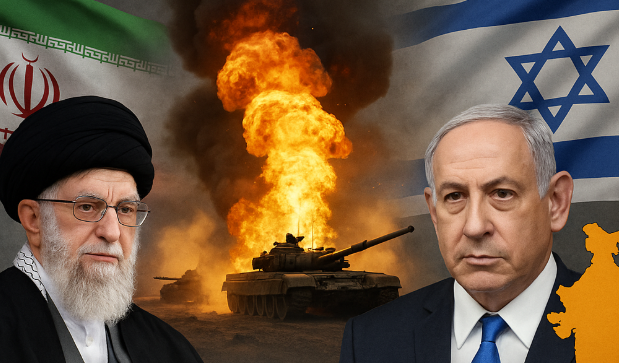
On June 17, the skies over Tehran and Tel Aviv were filled with fire. Missiles sliced through the air, sirens blared across cities, and ordinary people ran for shelter. Fear hung heavily in the air. But while the bombs fell in Iran and Israel, something strange and telling happened—global attention wasn’t focused on those burning cities. Instead, the world watched Washington.
This shift in focus wasn’t surprising. The world has long been shaped by invisible levers of power, often far removed from the battlefields. Decisions that determine war and peace are increasingly made in capitals like Washington, not in the places where the consequences are felt most violently. The events of June 17 weren’t just another chapter in the Iran-Israel rivalry; they were a stamp—an undeniable confirmation—that this is how the world now works.
As explosions echoed across the Middle East, the bigger questions were all being asked about one man: Donald Trump, the current President of the United States.
With Trump back in the White House, the global order has returned to a familiar but volatile terrain. Known for his strong stances, unpredictable decisions, and often unilateral approach to foreign affairs, Trump’s response to the Iran-Israel escalation has become the single biggest variable in the conflict.
People across the world began asking:
What will President Trump do next?
Will the U.S. directly bomb Iran in support of Israel?
If that happens, how will Iran retaliate?
Could this lead to a wider regional war—or even a global confrontation?
Right now, no one can claim to have the answers. The White House has been silent. The Pentagon remains on alert. Diplomats are tight-lipped. News channels can only speculate. And as silence grows louder, so does fear.
There’s something deeply unsettling about this dynamic—missiles raining down over Tehran and Tel Aviv, and yet the real suspense lies thousands of miles away. This is the reality of modern geopolitics: the battlefield might be in the Middle East, but the command center is in Washington.
June 17 wasn’t just about firepower in the skies—it was about questions that have no answers. It was about a global system where decisions are made far from the damage they cause. It was about how one man’s decision—President Trump’s—could shape the fate of millions, not just in Iran or Israel, but across the entire region and perhaps the world.
We don’t yet know what’s coming. We don’t know if this is the peak of the crisis or just the beginning. But we do know this: the world no longer waits for bombs to fall to react. It waits for signals from Washington.
Because in this age of power, Tehran and Tel Aviv may burn—but it’s Washington that holds the match.
Disclaimer:This article is based on publicly available information and developments as of June 17. The geopolitical situation in the Middle East is complex and rapidly evolving. The views expressed here are for informational and analytical purposes only and do not represent any official policy or prediction. Readers are advised to follow credible news sources and official statements for real-time updates.




